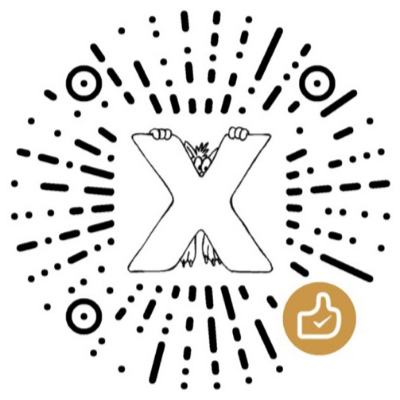The Life Events Stress Scale is a tool used to assess the impact of life events an individual has experienced over a period of time on their psychological stress levels. This scale is designed to measure an individual’s degree of stress to various life events and the impact these events may have on their health and well-being. Life event stress scales usually consist of a series of specific life events that cover various aspects that an individual may experience over a period of time, such as work, family, relationships, health, etc. Each event is assigned a score that reflects the degree of stress the event caused to the individual. Individuals need to select corresponding scores based on whether they have experienced these events in the past period of time and the degree of stress these events have had on themselves. The Life Event Stress Scale can be used to study and evaluate an individual’s stress level and understand the impact of life events on their mental health. However, it is important to note that each person may be differently stressed by life events, and the scale cannot fully capture all possible stressful events. Therefore, when assessing an individual’s level of psychological stress, other factors need to be taken into consideration, such as the individual’s coping ability and support system. Depending on the specific Life Event Stress Scale version and the needs of the user, the scale may contain different events and scores. The most commonly used life event stress scale for this test is the Holmes and Rahe Stress Scale, also known as the Social Readjustment Rating Scale (SRRS), which is a well-recognized Scales for measuring stress that have some value are designed to measure major life events. The Social Readjustment Scale (SRRS) was designed to measure major life events. The designer was Holmes and it was officially used clinically in 1967. After practice, this scale has certain practical value. “People who score higher on the scale are more likely to suffer from heart disease, fractures, diabetes, leukemia and minor colds.” Scores on the scale are also associated with “psychiatric disorders, depression, schizophrenia, and serious mental illness.” In addition, the continuous accumulation of multiple life events will have more obvious effects. Because the overall immune function of the victims is reduced, they are extremely susceptible to illness. In 1967, TH Holmes and RH Rahe conducted a survey on more than 5,000 people in the United States about life events (referring to social life situations and events that cause changes in people’s lives and require adaptation and coping). ) on health effects. They tabulated 43 common life events in American life at that time, and called the degree of life change caused by each life event or the amount of effort required to achieve social readjustment, called a life change unit (LCU). , to reflect the intensity of psychological stress. The researcher believes that the death of a spouse causes the greatest change in the life of the person concerned, so the measurement unit of life change for the death of the spouse is 100. The measurement units of other life events are self-evaluated by each respondent by comparing with the aforementioned standards and finally obtained The “average life change units” of the self-evaluation of 43 life events by the surveyed people were arranged in order from large to small, and a table of contents was compiled including the 43 life events and the corresponding life change measurement units. , called the Social Readjustment Rating Scale (SRRS). Holmes followed people who experienced different events over many years and concluded that life events were associated with major health changes within 10 years. If the LCU exceeds 200 units in one year, the probability of illness increases. If the LCU exceeds 300 units, the probability of illness in the next year reaches 70%. Note that this scale has limitations, so its use should be closely related to the nature of clinical symptoms and combined with other clinical examination indicators for comprehensive evaluation. There are great dangers in using a scale alone to make a diagnosis. This scale contains 43 events, each event has a score associated with it, and individuals need to calculate the total score based on the events they have experienced in the past year. The higher the total score, the more stressful events the individual has experienced in the past year, and the level of psychological stress may be correspondingly higher. If you are curious about your life event stress levels and would like to take a free online test to assess your situation, click the Get Started button to take the test now. Please note that this test is a reference tool only and is not a substitute for professional medical advice.
life event stress scale test

Comment
💙
💚
💛
❤️
If the website is helpful to you and qualified friends are willing to reward you, you can click the reward button below to sponsor this website. Appreciation funds will be used for fixed expenses such as servers and domain names. We will regularly update your appreciation to the appreciation record. You can also help us survive as a free way by clicking on ads on the webpage, so that we can continue to create more high-quality content! You are welcome to share and recommend the website to your friends so that more people can benefit. Thank you for your contribution to this website, thank you all!
Relevant test recommendations
- Test your stress level
- Picture Psychological Test: How stressed are you lately?
- Picture Psychological Test: Stress Test
- Positive Emotional Affect Test Scale
- Psychological test: Do you know how stressful you feel during an interview?
- Delaware Bullying Victimization Scale DBVS-S (Student Paper) Online Test
- PSS Skoda Stress Perception Scale Free Online Test
- Internet Addiction IAD Self-Assessment Scale
- Test Anxiety Psychological Test for Students (TAS)
Related reading recommendations
- The paradox of choice, how to decide among many choices?
- The secret of stress: Is it your friend or enemy?
- Situational depression: depression triggered by stressful events
- What is social phobia?
- What is travel anxiety?
- How much psychological pressure are you under? Come and test it out
- How to conduct effective psychological counseling
- 6 simple and effective emotional exercises to help you manage work stress, improve health, and enhance happiness
- Introduction to psychological scales: Jackson Personality Inventory (JPI-R) - a psychological tool for exploring individual differences
Latest psychological tests
Testing today
Popular psychological tests
The most accurate psychological tests
popular articles
latest articles
Reading today
Mental/Health
Savior Mindset Analysis: The definition, characteristics, effects, and how to change the Savior Mindset.
Character/Personality
Jung's Eight Dimensions + MBTI|Is there another side to your personality? INFP’s shadow function personality revealed!

